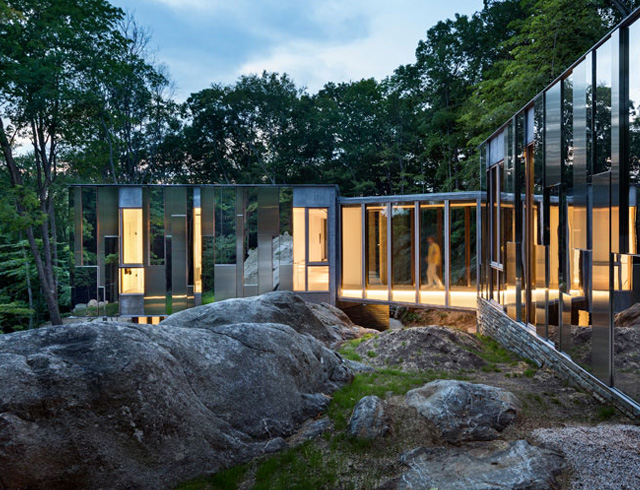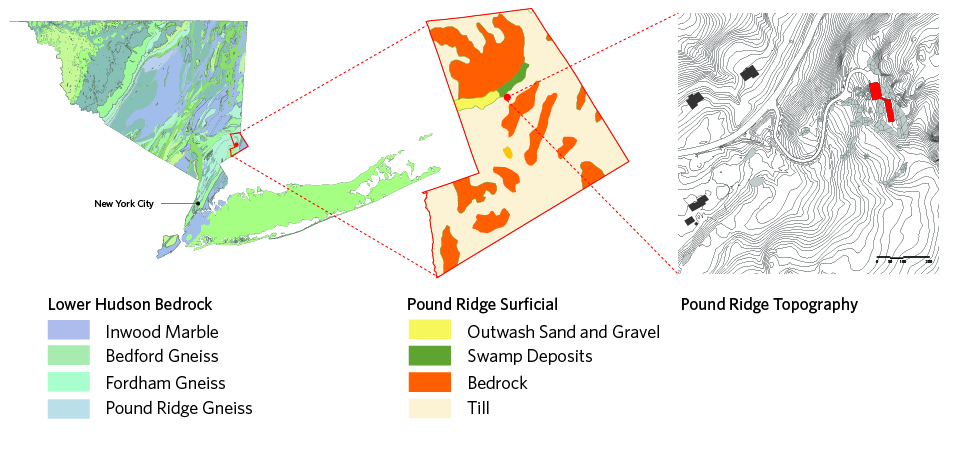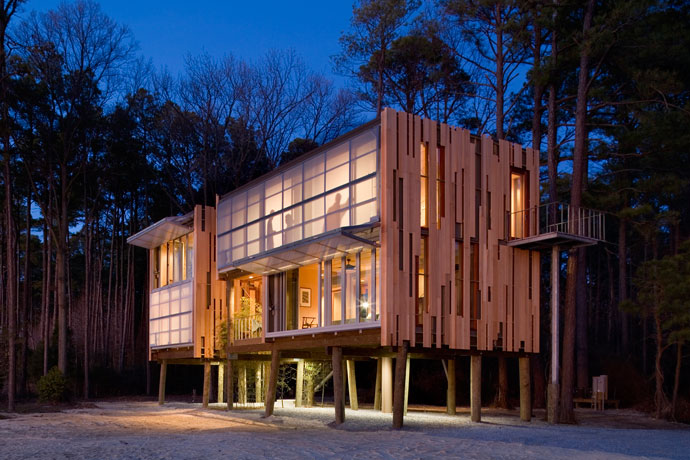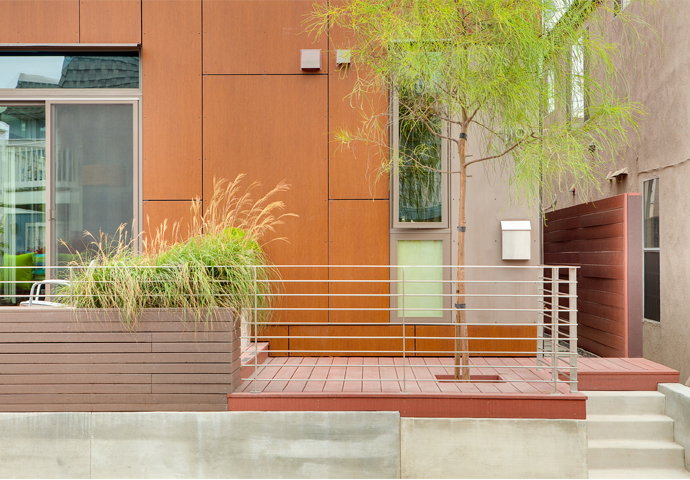Investigating Site Geology
The site for Pound Ridge House presented an opportunity to design a home within the rocky terrain created by glacial activity across the ages.
© Peter Aaron/OTTO
In 2010, a property in Pound Ridge, New York, presented a unique building site—with steep, uneven terrain defined by forest, exposed rock, and a ridge rising more than a hundred feet from the nearest road. As we began design on a home for this site, our design goals included allowing the geologic history to inform the house's conceptual design, anchoring the house to the site, and seeking out interior and exterior materials that would have contextual relevance in this rich setting. A research query was undertaken to allow us to better understand the geologic context and history.
SITE GEOLOGY
The town of Pound Ridge is representative of a unique and complex regional geologic history that extends back to some of the earliest rock formations on the East Coast (approximately 1 billion years ago) up to the most recent glacial event (approximately 15,000 years ago). Pound Ridge is one of the northernmost areas of the Manhattan Prong, the primary bedrock formation of Manhattan Island. As such, it contains the same granite gneiss formations that can be found in Manhattan's Central Park and throughout the larger Highlands Province region that covers parts of New York, Connecticut, New Jersey, and Pennsylvania.
The granite gneiss of the Manhattan Prong was formed a billion years ago, during what is known as the Grenville orogeny, or mountain-building episode, which marked the creation of an ancient super-continent. It is the crystalline basement rock of the Canadian Shield, the most ancient part of the North American continent. The gneiss did not become a part of the New York region until another cataclysmic mountain-building event, the Taconic orogeny, overthrust and intensely folded it with layers of schist and marble, forming the Manhattan Prong. The Taconic orogeny occurred around 450-550 million years ago, when the continents began to move toward each other, and was the first of a series of tectonic events that culminated in the creation of Pangaea. Fordham gneiss, the primary formation from this early landforming process, is one of the primary bedrock formations of the Pound Ridge site. The three other major geologic formations on site include Pound Ridge gneiss, Bedford gneiss, and Inwood marble.
The majority of visible landform on the site can be described as surficial geology. Surficial geology refers to all the sediments found above its bedrock. In Pound Ridge, most surficial materials were deposited in processes relating to the Laurentide Ice Sheet, part of the Wisconsin glaciation. This mass of ice, which covered much of North America for two million years, reached heights of more than 1000 ft. in the northeast. It receded roughly 15,000-30,000 years ago, leaving behind glacial scour and till: an unsorted mixture of sand, clay, silt, rocks, and boulders.
In other areas of the site, most commonly the upland areas, exposed bedrock is found, with minimal to no glacial till or soil. Evidence of glacial activity is revealed by large glacial “erratics” (pieces of rock that differ from those native to the area and were carried here by glacial ice). Geotech surveys found the distance to bedrock to vary throughout the site—an indicator of variable glacial deposits associated with glacial retreat and float. Further evidence may be found in the soils that are present on the site, which are characterized as relatively young, defined by minimal development and structure. These are the direct result of recent weathering of glacial material by biophysical processes.
The majority of the rock found on site is of glacial origin and resembles a combination of both granite and gneiss. Often confused for one another, granite is an igneous rock (solidified from lava or magma), whereas gneiss is formed after metamorphosis of an existing igneous rock. While it is difficult to identify the geologic origins of glacial debris, walking the site allowed us to identify different geologic phenomenon associated with glacial retreat, including:
- Float: broken off bedrock that is evidence of mass wasting
- Glacial polish: a characteristic of rock surfaces where glaciers have passed over bedrock, typically granite pebbles and sand grains removed from upper levels which in turn grind a smooth or grooved surface upon the underlying rock
- Striation: scratches or gouges, usually multiple, straight, and parallel, that are cut into bedrock by glacial abrasion
- Jointing: breaks or fractures in a body of rock
- Talus: accumulations of angular debris at the base of steep slopes, which are the result of flowing water or frost-induced surface creep, or which may have fallen off the cliff where they were wedged by ice
DESIGN
Our deeper understanding of site as a result of this inquiry into the geology and the processes that formed it allowed us to design a home that respects and interacts with the natural surroundings. Designed as three shifting volumes that gently respond to the site's natural slopes and plateaus, the lower entry level is anchored in stone to a flat portion of the hillside, while the upper bedroom and living areas move lightly between the massive rock outcroppings of the dramatic glacial ridgeline.







